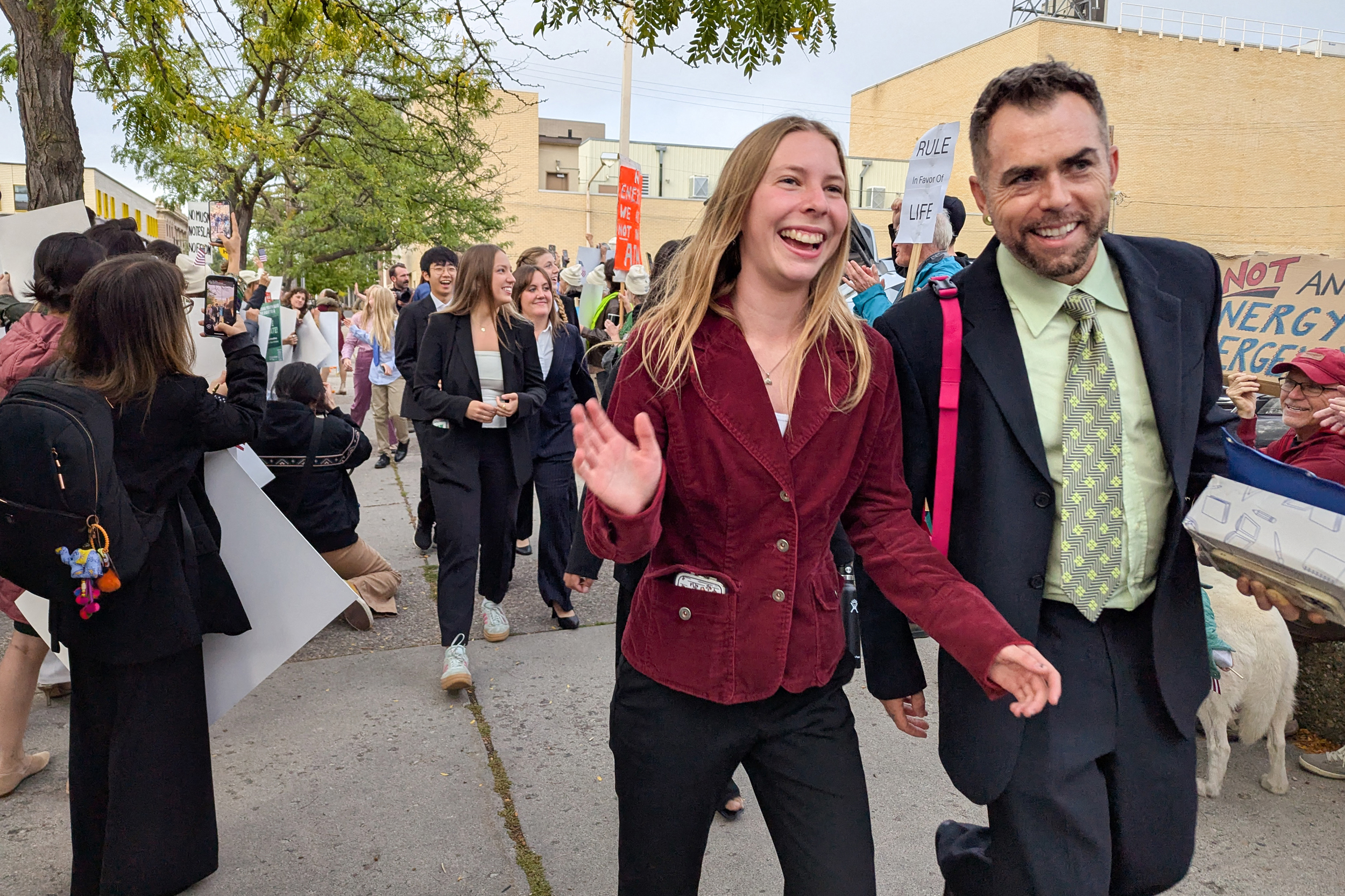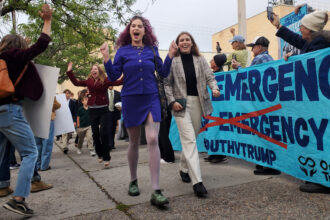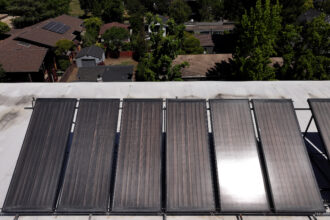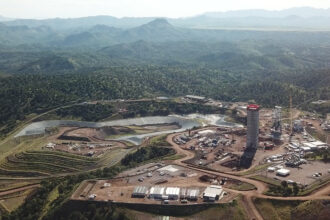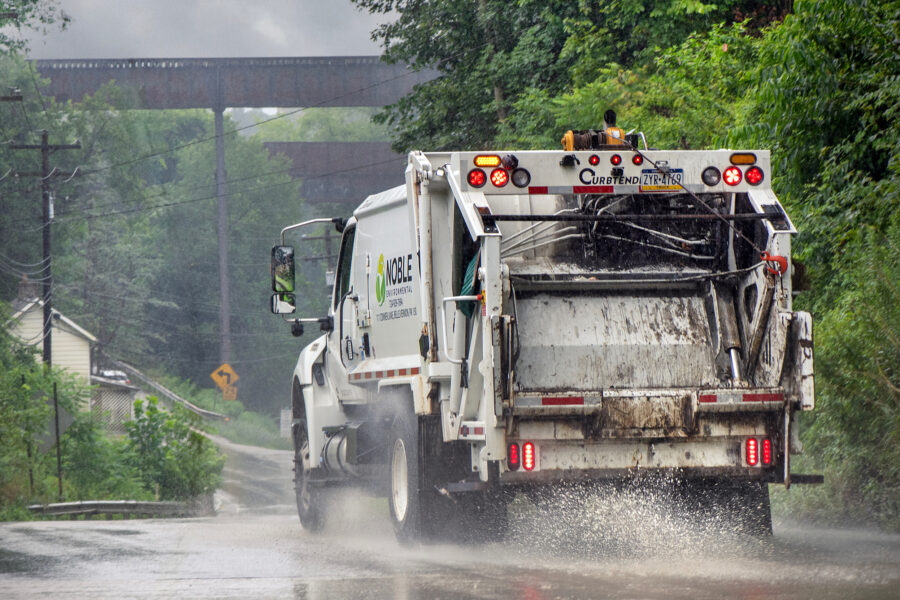A federal district court in Montana Wednesday granted the Trump administration’s request to toss out a youth-led lawsuit challenging the administration’s efforts to increase the extraction and use of fossil fuels and other actions that suppress climate science and undermine renewable energy. While the court found it plausible that these actions would cause grave harm to the health and wellbeing of children, it determined that it is powerless to stop them, as that would tread into the realm of policymaking reserved for Congress.
In making its determination, the court followed what it viewed as binding precedent from the 9th Circuit Court of Appeals, which ruled in the landmark Juliana v. United States youth climate case that courts could not provide the plaintiffs’ requested relief to alleviate the harms of climate change.
The Oct. 15 decision in the most recent case, Lighthiser v. Trump, comes after the court held a two-day hearing in mid-September that featured live testimony from some of the youth plaintiffs and six expert witnesses, including climate scientists, doctors, economists and renewable energy experts. It was the first time in U.S. history that a federal court heard live testimony in a youth climate lawsuit. The testimonies were intended to provide evidentiary support for the plaintiffs’ motion for a preliminary injunction in which the court would block implementation of the Trump administration’s fossil fuel agenda while the case continues to play out. The court also heard the government defendants’ motion to dismiss the lawsuit.
The case, filed on May 29 by 22 young Americans, aged 7 to 25, against President Donald Trump as well as some members of his cabinet and the agencies they lead, specifically challenged three executive orders that the president issued to boost fossil fuels. Under these orders, the Trump administration has taken a slew of actions such as opening up more federal lands to oil and gas drilling and coal mining, fast-tracking fossil fuel permitting decisions, investing hundreds of millions of dollars into coal-fired power plants, halting or cancelling solar and wind projects in development and moving to rescind the EPA’s endangerment finding for greenhouse gases.
Implementing the orders will result in an estimated 205 million metric tons of additional annual climate pollution by 2027 and 510 million metric tons of additional annual emissions by 2035, Jesse Jenkins, an energy systems engineer at Princeton University who was one of the plaintiffs’ expert witnesses, told the court. By exacerbating the climate crisis that is already adversely and disproportionately impacting the nation’s children, including the young plaintiffs, the executive orders violate the youths’ constitutional rights to life and liberty, the lawsuit alleged. It also claimed that Trump was acting beyond his lawful authority in issuing executive orders that contravene other federal laws like the Clean Air Act.
Although the court acknowledged the serious harms that the orders are expected to inflict—even recognizing fossil fuel exposure and climate change as a “children’s health emergency”—it “reluctantly” decided that it cannot do anything about them. “While this Court is certainly troubled by the very real harms presented by climate change and the Challenged EOs’ effect on carbon dioxide emissions, this concern does not automatically confer upon it the power to act,” U.S. District Judge Dana Christensen wrote in the 31-page ruling.
Christensen ultimately accepted the federal defendants’ argument that the youth plaintiffs lacked the legal standing to bring a case and, as in the Juliana case, found the court could not provide the requested relief. Overturning the executive orders and supervising an “untold number of federal agency actions” to monitor compliance, according to Christensen, would be impractical and unprecedented. It effectively would amount to “hundreds of lawsuits being brought in a single case,” he wrote, adding that he is “unaware of any authority that supports such a sweeping ruling.”
The U.S. Department of Justice applauded the ruling, saying in an emailed statement that it “throws out a sweeping and baseless attack on President Trump’s energy agenda.”
“Despite losing a similar case many times over, plaintiffs asked the court to block several of the President’s executive orders along with all the rules federal agencies will ever promulgate in response to those orders,” said Adam Gustafson, Acting Assistant Attorney General of the Environment and Natural Resources Division (ENRD) at the Department of Justice. The division “is proud to defend President Trump’s efforts to unleash American energy,” he added.
The plaintiffs in the Juliana case, which challenged the federal government’s support for a fossil fuel-based energy system, also sought what federal courts viewed as sweeping relief. That case initially requested a declaration that the government’s conduct, by contributing to dangerous climate change that threatened the plaintiff’s life, liberty and property and violating the public trust doctrine, was unconstitutional. It also asked the court to order the federal government to develop and implement a science-based climate recovery plan. In January 2020, a 9th Circuit Court of Appeals panel ruled in a split 2-1 decision that granting such relief exceeded the authority of courts because it dealt with complex policy matters that must be addressed by the executive and legislative branches of government. The plaintiffs revised their complaint to request only a court declaration of rights violations, but last year the 9th Circuit again ruled that the case must be dismissed. The Supreme Court declined plaintiffs’ request to review that ruling in March, bringing Juliana v. United States to an end after nearly a decade of procedural wrangling but without the case ever getting to trial.
Several of the Juliana plaintiffs are also plaintiffs in the Lighthiser case against Trump, which they say is distinctly different. Christensen’s ruling, however, asserts that the two cases “nonetheless share several important characteristics,” including the request for courts to effectively oversee numerous government policies and actions in order to ensure constitutional compliance. Courts do not have the power “to create environmental policy,” the ruling says.
Christensen also wrote that he was “troubled” by youth plaintiffs’ request to revert back to the “regulatory status quo” as it stood before Trump took office in January. “Plaintiffs are effectively asking that this Court order the United States to return to the environmental policy of the previous administration,” his ruling states.
Julia Olson, chief legal counsel at Our Children’s Trust and lead attorney for the youth plaintiffs, said the court got that wrong. “We’re not trying to freeze the Biden policies and leave them as they were,” she told Inside Climate News. “The goal of the case is to stop these executive orders from being carried out.”
During the September hearing, Department of Justice lawyer Michael Sawyer told the court that the case was “undemocratic” because voters had elected Trump, who campaigned on a promise to “drill, baby, drill” and unleash fossil fuels.
Olson, however, said the case was not about disputing or dictating national energy policy, but rather about protecting the fundamental constitutional rights of children.
“It’s not like [Trump would be] stuck with Biden’s policies. Certainly not,” she told Inside Climate News. “But he is stuck with the U.S. Constitution and with the Clean Air Act and with the statutes that he’s obligated to uphold and carry out.”
Olson noted that some of the younger plaintiffs are not even allowed to vote, and thus have no other recourse than the courts.
On a Wednesday Zoom call with the plaintiffs discussing the ruling, Olson said there were “lots of emotions” and tears. “I think the most prevalent sentiment was, how can a judge see us and see the harm we’re experiencing and see that these executive orders are going to worsen our physical injuries, and then say that there’s nothing he can do about it?”
The parts of the ruling that talked about the court’s concern with the scope of the case and the supervision it requested of numerous actions under the executive orders, Olson said, were especially troubling.
“It sends a message to the president and the executive to just go big, go big with your violations because if it’s big enough, then we’re going to throw up our hands,” she said. “When the reality is, when the president goes big with his unconstitutional executive directives, that’s precisely when the courts need to step in.”
Our Children’s Trust says it plans to pursue an expedited appeal of the ruling to the 9th Circuit Court of Appeals.
“The 9th Circuit has some correcting to do, and we’re going to give them the opportunity to do that,” Olson told Inside Climate News.
The 9th Circuit, however, is the same court that shut the courthouse doors on the Juliana plaintiffs.
“We’re challenging completely different conduct,” Olson said. “This is a different case.”
About This Story
Perhaps you noticed: This story, like all the news we publish, is free to read. That’s because Inside Climate News is a 501c3 nonprofit organization. We do not charge a subscription fee, lock our news behind a paywall, or clutter our website with ads. We make our news on climate and the environment freely available to you and anyone who wants it.
That’s not all. We also share our news for free with scores of other media organizations around the country. Many of them can’t afford to do environmental journalism of their own. We’ve built bureaus from coast to coast to report local stories, collaborate with local newsrooms and co-publish articles so that this vital work is shared as widely as possible.
Two of us launched ICN in 2007. Six years later we earned a Pulitzer Prize for National Reporting, and now we run the oldest and largest dedicated climate newsroom in the nation. We tell the story in all its complexity. We hold polluters accountable. We expose environmental injustice. We debunk misinformation. We scrutinize solutions and inspire action.
Donations from readers like you fund every aspect of what we do. If you don’t already, will you support our ongoing work, our reporting on the biggest crisis facing our planet, and help us reach even more readers in more places?
Please take a moment to make a tax-deductible donation. Every one of them makes a difference.
Thank you,

